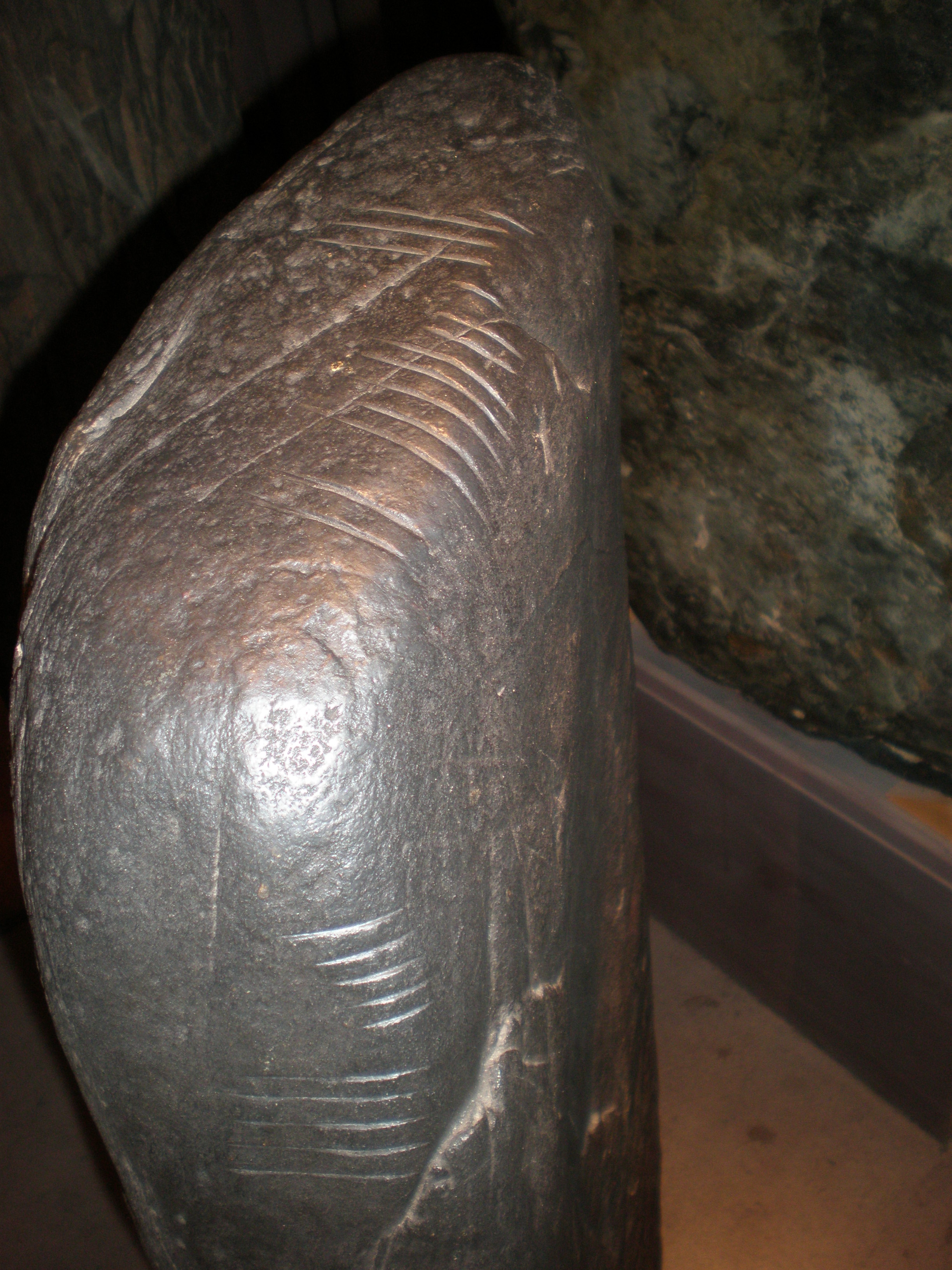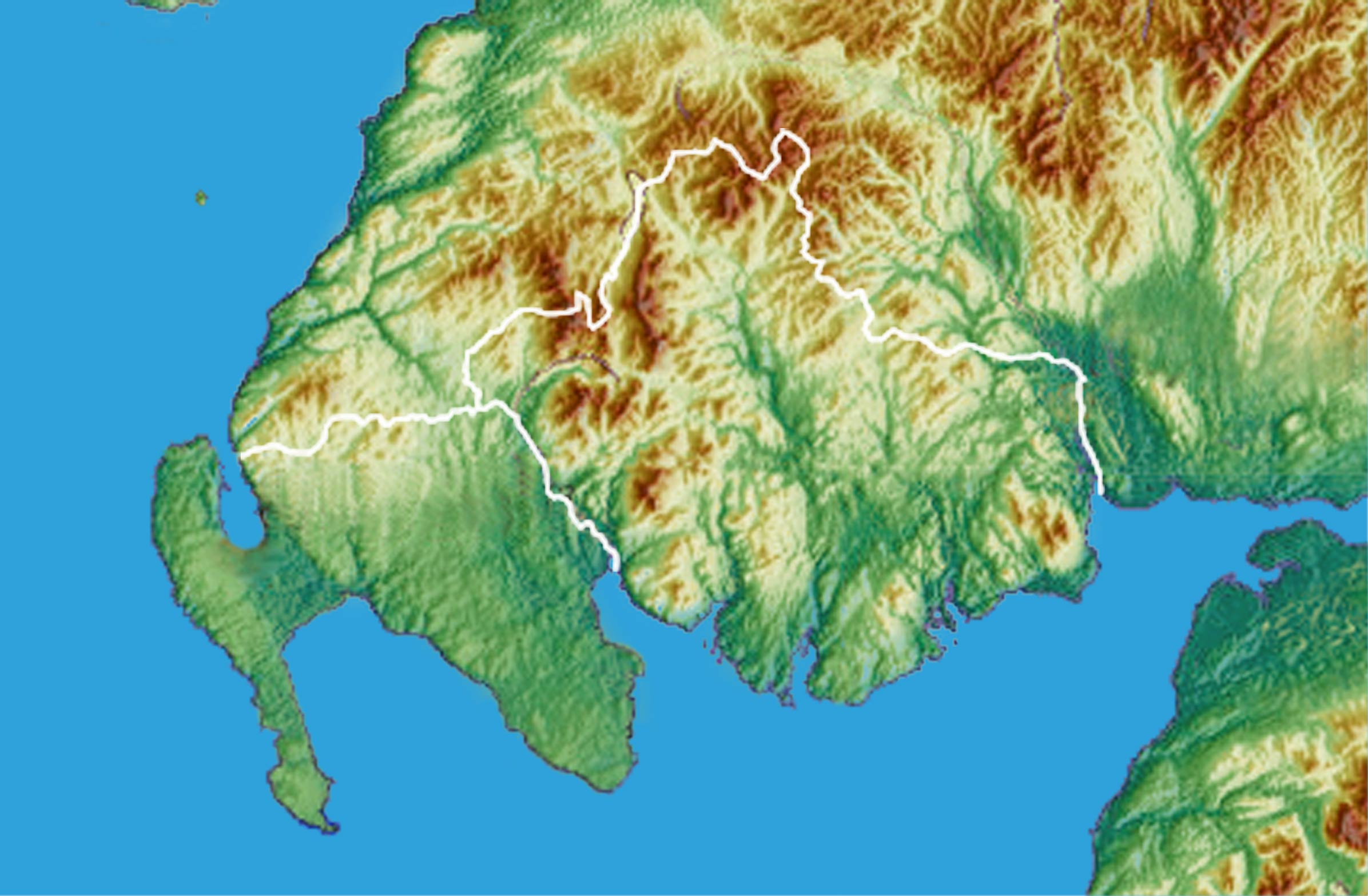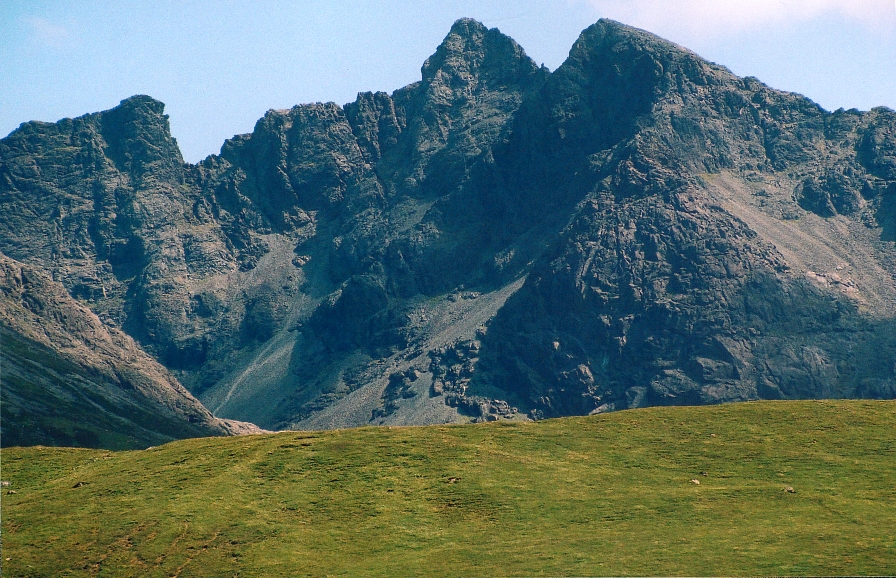|
Languages Of Scotland
The languages of Scotland belong predominantly to the Germanic languages, Germanic and Celtic languages, Celtic language families. The main language now spoken in Scotland is English, while Scots language, Scots and Scottish Gaelic are minority languages. The dialect of English spoken in Scotland is referred to as Scottish English. Celtic languages The Celtic languages of Scotland can be divided into two groups: Goidelic languages, Goidelic (or Gaelic) and Brittonic languages, Brittonic (or Brythonic). Pictish language, Pictish is usually seen as a Brittonic language but this is not universally accepted. They are known collectively as the Insular Celtic languages. Goidelic languages The Goidelic language currently spoken in Scotland is Scottish Gaelic. It is widely spoken in the Outer Hebrides, and also in parts of the Inner Hebrides and Scottish Highlands, and by some people in other areas of Scotland. It was formerly spoken over a far wider area than today, even i ... [...More Info...] [...Related Items...] OR: [Wikipedia] [Google] [Baidu] |
Pictish Language
Pictish is an extinct Brittonic Celtic language spoken by the Picts, the people of eastern and northern Scotland from late antiquity to the Early Middle Ages. Virtually no direct attestations of Pictish remain, short of a limited number of geographical and personal names found on monuments and early medieval records in the area controlled by the kingdoms of the Picts. Such evidence, however, shows the language to be an Insular Celtic language – probably a variant of the Brittonic language once spoken in most of Great Britain. The prevailing view in the second half of the 20th century was that Pictish was a non-Indo-European language isolate, or that a non-Indo-European Pictish and Brittonic Pictish language coexisted. Pictish was replaced by – or subsumed into – Gaelic in the latter centuries of the Pictish period. During the reign of Donald II of Scotland (889–900), outsiders began to refer to the region as the kingdom of Alba rather than the kingdom of the Pict ... [...More Info...] [...Related Items...] OR: [Wikipedia] [Google] [Baidu] |
Manx Language
Manx ( or , or ), also known as Manx Gaelic, is a Goidelic language, Gaelic language of the insular Celtic branch of the Celtic language family, itself a branch of the Indo-European language family. Manx is the heritage language of the Manx people. Although few children native to the Isle of Man speak Manx as a first language, there has been a steady increase in the number of speakers since the death of Ned Maddrell in 1974. He was considered to be the last speaker to grow up in a Manx-speaking community environment. Despite this, the language has never fallen completely out of use, with a minority having some knowledge of it as a heritage language, and it is still an important part of the island's Culture of the Isle of Man, culture and cultural heritage. Manx is often cited as a good example of language revitalization efforts; in 2015, around 1,800 people had varying levels of second-language conversational ability. Since the late 20th century, Manx has become more visible ... [...More Info...] [...Related Items...] OR: [Wikipedia] [Google] [Baidu] |
Strathnith
Nithsdale (), also known as Strathnith, Stranith or Stranit, is the strath or dale of the River Nith in southern Scotland. Nithsdale was one of the medieval provinces of Scotland. The provinces gradually lost their administrative importance to the shires created from the twelfth century, with Nithsdale forming part of Dumfriesshire. A Nithsdale district covering a similar area to the medieval province was created in 1975, based in the area's main town of Dumfries. The district was abolished in 1996, since when the area has been directly administered by Dumfries and Galloway Council. History The name ''Strath Nid'' may represent the Cumbric ''Ystrad Nidd''; Cumbric (a variety of Common Brittonic) was the dominant language in this area from before Roman times until the 11th or 12th century, whereas Gaelic influence here was late and transient. The River Nith flows north to south through the Southern Uplands in south-west Scotland, separating the Lowther Hills from the Scaur Hi ... [...More Info...] [...Related Items...] OR: [Wikipedia] [Google] [Baidu] |
Annandale, Dumfries And Galloway
Annandale is a district of Dumfriesshire, Scotland, centred on the dale or valley of the River Annan. It runs north–south through the Southern Uplands from Annanhead (north of Moffat) to Annan, Dumfries and Galloway, Annan on the Solway Firth. It is bordered by Nithsdale to the west and Eskdale, Scotland, Eskdale to the east. The Annandale Way runs the length of the valley, a distance of some . History Annandale is famous for its connection with Robert I of Scotland, Robert the Bruce, as the de Brus family was given this land by David I of Scotland, David I in 1124 as one of the border lordships when David became David, Prince of the Cumbrians, Prince of the Cumbrians. Along with Carrick, Scotland, Carrick, these lands acted as a buffer between the quasi-independent Lordship or Kingdom of Galloway and David's lands of Strathclyde and Cumbria. See also *Annandale distillery *Annadale, Shimla *Lord of Annandale, The Lordship of Annandale References External linksHistoric map ... [...More Info...] [...Related Items...] OR: [Wikipedia] [Google] [Baidu] |
Carrick, Scotland
Carrick (from the Scottish Gaelic , meaning 'rock') is a former Count#Definition, comital district of Scotland which today forms part of South Ayrshire. History The district of Carrick originally formed part of the 11th- to 12th-century Kingdom of Galloway, whose lords ruled it until 1186, when it was granted to Duncan, son of Gilbert of Galloway. He became the first to hold the Earl of Carrick, Earldom of Carrick. His son Neil became the second Earl, but he had no male heir - accordingly, his daughter, Margaret (also known as Marjorie of Carrick) inherited and became Countess of Carrick. Upon her death in 1292 the earldom passed to her son Robert de Brus, jure uxoris Earl of Carrick, Robert de Bruce, later to become King Robert I of Scotland (). Carrick saw some involvement in the First War of Scottish Independence, Scottish wars of independence under the said Robert the Bruce, which culminated in his victory over the English at Bannockburn (1314). It witnessed much inter-fami ... [...More Info...] [...Related Items...] OR: [Wikipedia] [Google] [Baidu] |
Galloway
Galloway ( ; ; ) is a region in southwestern Scotland comprising the counties of Scotland, historic counties of Wigtownshire and Kirkcudbrightshire. It is administered as part of the council areas of Scotland, council area of Dumfries and Galloway. Galloway is bounded by sea to the west and south, the Galloway Hills to the north, and the River Nith to the east; the border between Kirkcudbrightshire and Wigtownshire is marked by the River Cree. The definition has, however, fluctuated greatly in size over history. A native or inhabitant of Galloway is called a Gallovidian. The region takes its name from the ''Gall-Gàidheil'', or "stranger Gaels", Norse–Gaels, a people of mixed Gaelic and Norse descent who seem to have settled here in the 10th century. Galloway remained a Gàidhealtachd area for much longer than other regions of the Scottish Lowlands and a Galwegian Gaelic, distinct local dialect of the Scottish Gaelic language survived into at least the 18th century. A hardy ... [...More Info...] [...Related Items...] OR: [Wikipedia] [Google] [Baidu] |
Independent Kings Of Galloway
The lords of Galloway consisted of a dynasty of heirs who were lords (or kings) and ladies who ruled over Galloway in southwest Scotland, mainly during the High Middle Ages. Many regions of Scotland, including Galloway and Moray, periodically had kings or subkings, similar to those in Ireland during the Middle Ages. The Scottish monarch was seen as being similar to a high king (''Ard-Righ'' in Gaelic). The lords of Galloway would have either paid tribute to the Scottish monarch, or at other times ignored him. The Lords of Galloway are fairly well recorded in the 12th and 13th centuries, but the records are incomplete or conflicting at other times. Later on, the kings were known as "lords" at the Scottish court, and "kings" at home, finally becoming "lords" in both arenas. The boundaries of the Kingdom of Galloway were ill-defined, and varied over time. During many periods Galloway was much larger than it is today, and took in parts of southern Ayrshire, such as Carrick, Upper D ... [...More Info...] [...Related Items...] OR: [Wikipedia] [Google] [Baidu] |
Southwest Scotland
South West Scotland is one of the subdivisions of Scotland. Under the Nomenclature of Territorial Units for Statistics (NUTS), it was classified as a NUTS-2 statistical region. In the revised classification in 2016, the region was split into two statistical regions of West Central Scotland and Southern Scotland. Following Brexit, the regions were assigned under the new International Territorial Level codes in 2021. The region forms the south western part of the country, encompassing an area of . It incorporates 13 of the 32 defined council areas including the city of Glasgow. Classification Scotland is organized into 32 council areas for administrative purposes. The Nomenclature of Territorial Units for Statistics (NUTS) organized Scotland into four broader level subdivisions. These are classified as a NUTS-2 statistical regions, and incorporated various council areas within it. In 2016, the areas were re-classified, and South West Scotland was split into two NUTS-2 regions of We ... [...More Info...] [...Related Items...] OR: [Wikipedia] [Google] [Baidu] |
Galwegian Gaelic
Galwegian Gaelic (also known as Gallovidian Gaelic, Gallowegian Gaelic, or Galloway Gaelic) is an extinct dialect of Scottish Gaelic formerly spoken in southwest Scotland. It was spoken by the people of Galloway and Carrick until the early modern period. Little (except numerous placenames) and a song collected in North Uist have survived, so that its exact relationship with other Scottish Gaelic dialects is uncertain. History and extent Gaelicisation in Galloway and Carrick occurred at the expense of Northumbrian Old English and Cumbric, a Brittonic Celtic dialect related to Welsh. Use of Old Irish in Scotland can be traced in the Rhins of Galloway from at least the fifth century. How it developed and spread is largely unknown. The Gaelicisation of the land was complete probably by the eleventh century, although some have suggested a date as early as the beginning of the ninth century. The main problem is that this folk-movement is unrecorded in historical sources, so it ... [...More Info...] [...Related Items...] OR: [Wikipedia] [Google] [Baidu] |
Scottish Highlands
The Highlands (; , ) is a historical region of Scotland. Culturally, the Highlands and the Scottish Lowlands, Lowlands diverged from the Late Middle Ages into the modern period, when Scots language, Lowland Scots language replaced Scottish Gaelic throughout most of the Lowlands. The term is also used for the area north and west of the Highland Boundary Fault, although the exact boundaries are not clearly defined, particularly to the east. The Great Glen divides the Grampian Mountains to the southeast from the Northwest Highlands. The Scottish Gaelic name of ' literally means "the place of the Gaels" and traditionally, from a Gaelic-speaking point of view, includes both the Western Isles and the Highlands. The area is very sparsely populated, with many mountain ranges dominating the region, and includes the highest mountain in the British Isles, Ben Nevis. During the 18th and early 19th centuries the population of the Highlands rose to around 300,000, but from c. 1841 and for th ... [...More Info...] [...Related Items...] OR: [Wikipedia] [Google] [Baidu] |
Inner Hebrides
The Inner Hebrides ( ; ) is an archipelago off the west coast of mainland Scotland, to the south east of the Outer Hebrides. Together these two island chains form the Hebrides, which experience a mild oceanic climate. The Inner Hebrides comprise 35 inhabited islands as well as 44 uninhabited islands with an area greater than . Skye, Isle of Mull, Mull, and Islay are the three largest, and also have the highest populations. The main commercial activities are tourism, crofting, fishing and Scotch whisky, whisky distilling. In modern times the Inner Hebrides have formed part of two separate local government jurisdictions, one to the north and the other to the south. Together, the islands have an area of about , and had a population of 18,948 in 2011. The population density is therefore about . There are various important prehistoric structures, many of which pre-date the first written references to the islands by Classical antiquity, Roman and Greek authors. In the historic period ... [...More Info...] [...Related Items...] OR: [Wikipedia] [Google] [Baidu] |






